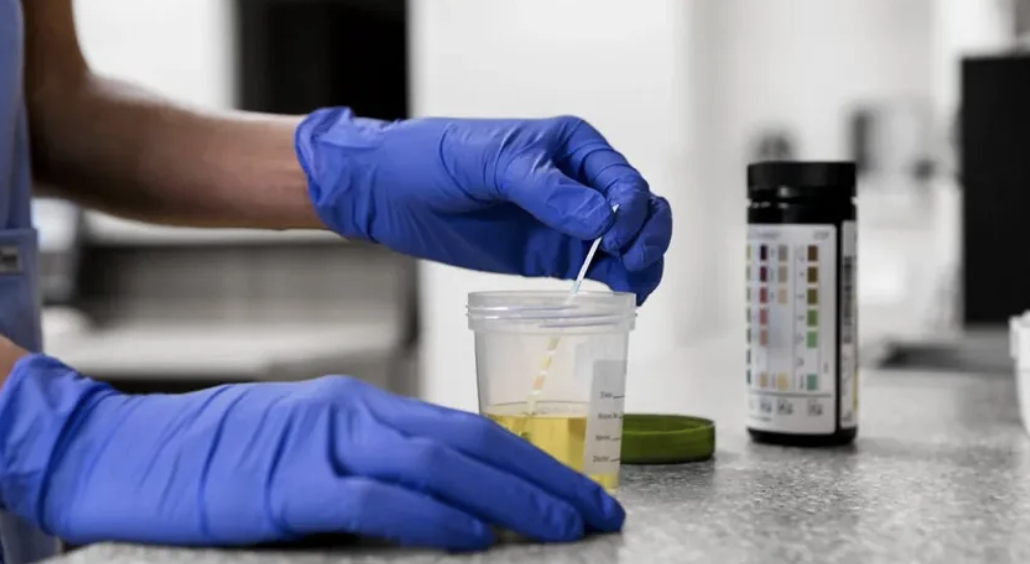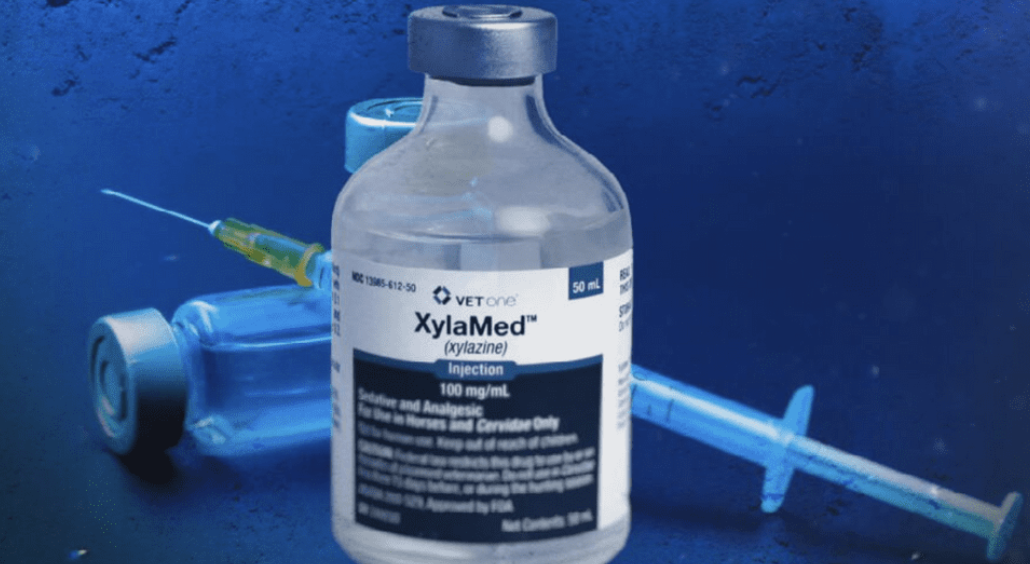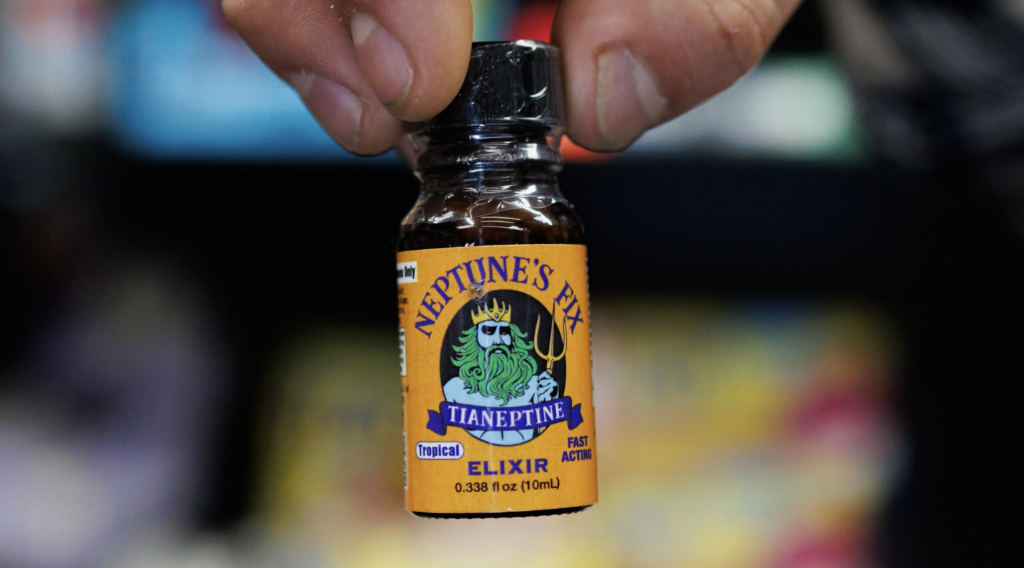Dopamine itself cannot be addictive. It is a naturally occurring neurotransmitter in the brain, not an external substance or behavior that can be misused.
There is no official medical diagnosis for dopamine dependence. The Diagnostic and Statistical Manual of Mental Disorders, Fifth Edition (DSM-5), does not recognize dopamine addiction as a clinical condition. This is because addiction is defined by compulsive behavior and impaired control, not by reliance on a single brain chemical.
Dopamine plays a central role in addiction due to its influence on motivation and reinforcement, rather than its ability to create pleasure alone. It supports the brain’s reward system by reinforcing behaviors that are associated with reward and encouraging the pursuit of future gratification.
Dopamine-seeking behavior refers to the repeated engagement in activities that stimulate dopamine release. This creates strong associations between those behaviors and feelings of satisfaction, reinforcing habits tied to short-term reward.
Over time, the brain begins to prioritize these rewarding behaviors, often at the expense of long-term well-being. This tendency helps explain the emergence of risky addiction-related behaviors, including compulsive sexual activity, alcohol dependence, substance use, disordered eating, and excessive use of digital technology.

Can you be addicted to dopamine?
Dopamine is not an addictive substance. Although it plays a critical role in the brain’s reward system, addiction occurs when specific behaviors or substances repeatedly overstimulate dopamine pathways. The chemical itself is not the source of addiction.
People develop addiction when they become dependent on actions or drugs that trigger an intense release of dopamine. Over time, this reinforces compulsive behavior. The brain links these external triggers to feelings of reward, but the dependency forms around the stimulus, not the dopamine itself.
A 2020 review by Roy A. Wise and Mykel A. Robble, titled Dopamine and Addiction, found that long-term exposure to addictive substances lowers the number of dopamine receptors in the brain. As a result, individuals begin to lose interest in other activities and focus almost entirely on the substance or behavior driving the dopamine response.
The concept of being addicted to dopamine is therefore inaccurate. Dopamine is not consumed like alcohol, food, or drugs. Instead, people become reliant on dopamine-inducing experiences, because dopamine plays a central role in driving motivation and learned behavior.
It is also a myth that dopamine directly causes pleasure. While it is involved in reward anticipation, a 2005 review by R.A. Bressan and J.A. Crippa pointed out that chemicals such as serotonin and natural opioids have a more direct influence on the sensation of pleasure.
A 2021 study by Roy A. Wise and Chloe J. Jordan, titled Dopamine, Behavior, and Addiction, explained that dopamine shapes how we learn from repeated experiences. Since addiction is a form of learned behavior, dopamine is deeply involved in reinforcing it.
When a person is exposed to addictive substances or rewarding activities, dopamine neurons fire in bursts that activate a series of responses linked to motivation and habit formation.
Behaviors like gambling and video gaming are strong examples. These activities create a pattern of frequent dopamine spikes due to ongoing novelty and social interaction, which reinforces compulsive engagement.
Is dopamine addiction a real thing?
No, dopamine addiction is not a medically recognized condition. Dopamine is a naturally occurring neurotransmitter, not a substance that can be directly misused or abused. While it plays a critical role in reinforcing reward-seeking behavior, there is no official diagnosis for "dopamine addiction" in the Diagnostic and Statistical Manual of Mental Disorders (DSM-5).
However, scientific evidence shows that chronic drug use can lead to abnormal dopamine responses in the brain. According to an article titled “Dopamine ‘Ups and Downs’ in Addiction Revisited” by Nadine Samaha and Tiffany Khoo, last revised in 2023, drug use can enhance dopamine neurotransmission, producing a sensitized, hyperdopaminergic reaction to drugs and drug cues, which motivates continued drug use.
This means individuals are not addicted to dopamine itself—but rather to the behaviors or substances that cause intense dopamine spikes. These overstimulated responses drive the cycle of addiction, not the dopamine molecule alone.
What is dopamine?
Dopamine is a catecholamine that acts as both a neurotransmitter and a hormone. It is released in the brain when a reward is anticipated and plays a vital role in motivation, movement, and reward-based learning. It also supports essential bodily functions, including digestion, circulation, sleep regulation, and stress response.
According to a 2019 study by ChangLiang Liu and Pascal S. Kaeser titled “Mechanisms and Regulation of Dopamine Release,” dopamine is released through precisely timed calcium signals and specialized neuron sites, ensuring accurate regulation of emotional and motor functions.
Dopamine also plays a key role in long-term brain plasticity. According to an article titled “Dopamine: The Neuromodulator of Long-Term Synaptic Plasticity” by Speranza and Porzio, last revised in 2023, dopamine shapes how we form habits and retain experiences by modulating synaptic strength over time.
Even anticipating a pleasurable activity, like seeing or smelling food, can trigger dopamine release. Once the experience is fulfilled, dopamine levels rise further, reinforcing the behavior. Daily activities like exercising, eating, listening to music, or social interaction all activate dopamine responses.
According to an article titled “Dopamine” by Wei Zhou and Han Chen, last revised in 2023, dopamine helps coordinate reward processing, attention, and executive function, making it crucial for healthy decision-making.
Dopamine itself is neither good nor bad. In balance, it promotes well-being, learning, and motivation. Problems only occur when dopamine pathways are overstimulated, often through substances or compulsive behaviors, leading to reinforced patterns that can contribute to addiction.
Is dopamine addictive?
No, dopamine itself is not addictive. It is a naturally occurring neurotransmitter that supports motivation, reinforcement, and goal-directed behavior. Addiction arises when certain behaviors or substances excessively stimulate dopamine pathways, not from the chemical itself.
According to an article titled “Dopamine and Addiction” by Roy A. Wise and Mykel A. Robble, last revised in 2020, dopamine’s role in addiction is tied to how it reinforces learned behaviors and enhances motivational salience. While dopamine amplifies the desire to pursue rewarding experiences, it is not an addictive substance on its own.
Dopamine is essential for survival. It regulates movement, motivation, mood, reward processing, attention, and decision-making. Without it, basic functions such as initiating movement, forming habits, or experiencing pleasure would be severely impaired.
According to an article titled “A Brain on Cannabinoids: The Role of Dopamine Release in Reward” by Jason Peters and Erik Oleson, last revised in 2022, disrupting dopamine signaling can impair the brain's ability to process rewards, weakening the motivation to pursue vital behaviors like eating and social interaction.
Complete dopamine depletion is incompatible with life as we know it. While some functions may be partially supported by other neurotransmitters, dopamine is irreplaceable for core brain and body processes.
What role does dopamine play in addiction?
Dopamine is central to the development of addiction, serving primarily as a driver of motivation rather than a direct source of pleasure. It reinforces behaviors by linking them to rewarding outcomes, encouraging repetition through the brain’s reward circuitry.
When someone uses a substance or engages in a behavior that elevates dopamine levels, the brain begins to associate that action with a desirable result. This association creates a strong internal drive to experience the behavior again.
Over time, dopamine strengthens the connections between the action and the perceived reward. These reinforced neural pathways make the behavior more automatic and harder to resist, even when it leads to harmful consequences. Dopamine's powerful influence on motivation is a key reason addictive patterns become deeply ingrained.
What are the signs and symptoms of dopamine addiction?
Dopamine addiction refers to compulsive engagement in activities that overstimulate the brain’s reward system, leading to behavioral patterns similar to substance addiction. Below are key signs and symptoms, each supported by scientific research:
- Persistent cravings for reward-inducing stimuli: Individuals may feel a strong, recurring urge to engage in behaviors like gaming, social media use, or drug consumption to stimulate dopamine release. According to an article titled “Dopamine and Addiction” by Roy A. Wise and Mykel A. Robble, last revised in 2020, long-term exposure to addictive stimuli can sensitize dopamine circuits, creating stronger motivational reactions to cues associated with those behaviors.
- Reduced pleasure from everyday activities: Natural rewards such as socializing, eating, or hobbies may no longer feel satisfying. According to an article titled “Dopamine, Behavior, and Addiction” by Roy A. Wise and Chloe J. Jordan, last revised in 2021, chronic overstimulation leads to decreased dopamine receptor availability, dulling the brain’s response to typical rewarding experiences.
- Impaired concentration and decision-making: Cognitive functions like focus, memory, and judgment may become compromised. According to an article titled “How an Addicted Brain Works” by Yale Medicine, last revised in 2022, addiction impacts the prefrontal cortex, leading to reduced executive function and rational control over behavior.
- Mood instability or emotional withdrawal: Withdrawal from dopamine-triggering activities often leads to anxiety, irritability, or depression. According to an article titled “Dopamine Detox: Benefits, Side Effects, and What to Expect” by Sandstone Care, last revised in 2023, abstaining from highly stimulating activities can reveal emotional dysregulation due to dopamine depletion.
- Compulsive behavior despite negative outcomes: Individuals continue the behavior even when it causes personal, social, or health-related harm. According to an article titled “Dopamine Circuit Mechanisms of Addiction-Like Behaviors” by Frontiers in Neural Circuits, last revised in 2021, addictive behaviors persist when dopamine pathway alterations impair control mechanisms in the brain.

How do you know if you have a dopamine addiction?
Dopamine addiction is not officially recognized as a clinical diagnosis, but individuals can still experience compulsive behaviors driven by overstimulation of dopamine pathways. Recognizing the signs early can help prevent long-term mental and emotional consequences.
Here’s how to identify if you may be experiencing dopamine-driven behavioral addiction:
- You constantly seek quick gratification: Suppose you find yourself frequently refreshing social media, binge-watching content, eating impulsively, or engaging in similar high-reward activities for short bursts of pleasure. In that case, this may indicate a dopamine-seeking loop.
- You feel restless or irritable without stimulation: An inability to sit quietly without checking your phone, snacking, or seeking entertainment could point to dopamine over-reliance.
- You’ve lost interest in normal pleasures: If regular activities like reading, going for a walk, or socializing no longer feel enjoyable, your reward system may be desensitized due to repeated overstimulation.
- You notice compulsive repetition: Repeating the same behavior (e.g., scrolling, gaming, shopping) even when it interferes with responsibilities or causes emotional distress is a red flag.
- You feel a crash after overstimulation: A pattern of dopamine spikes followed by emotional lows (e.g., fatigue, brain fog, sadness) is common in those overexposed to artificial rewards.
- Triggers include both internal and external cues: Behavior changes often begin with environmental triggers like notifications, stress, boredom, or even smells and visuals that remind you of the rewarding behavior.
According to an article titled “Dopamine: The Neuromodulator of Long-Term Synaptic Plasticity” by Speranza and Porzio, last revised in 2023, dopamine shapes how we form habits and respond to repeated stimuli, meaning even minor cues can trigger cravings if patterns are reinforced over time.
What are the risky addiction behaviors associated with dopamine?
Certain addictive behaviors can overstimulate the brain’s dopamine pathways, leading individuals to repeatedly seek out the source of the reward. These behaviors can become compulsive over time and often carry serious personal and social consequences. Common dopamine-driven addiction patterns include:
- Compulsive sexual behavior
- Alcohol dependence and misuse
- Substance use and drug-related addiction
- Eating disorders are linked to reward-seeking
- Excessive engagement with digital media and technology
1. Compulsive sexual behavior
Sex addiction, also referred to as hypersexuality, involves persistent and uncontrollable participation in sexual activities despite clear negative consequences. This condition can severely disrupt personal relationships and emotional well-being.
During sexual activity, dopamine is released and activates the brain’s reward centers, which contributes to the reinforcing nature of these behaviors. Individuals experiencing this form of addiction often continue pursuing sexual encounters in an effort to recreate the same sense of satisfaction.
Over time, the reward system becomes less sensitive, requiring more intense or frequent sexual experiences to trigger the same dopamine response. This growing dependence gradually shifts priorities, placing sexual activity above other essential aspects of daily life.
2. Alcohol dependence and misuse
Alcohol use disorder (AUD) is a long-term condition marked by repeated alcohol consumption despite health risks and social or occupational disruption. Severity can range from mild to severe, depending on the extent of impairment and loss of control.
A 2020 article from the National Institute on Alcohol Abuse and Alcoholism explains that alcohol’s impact on dopamine levels is influenced by how much and how often it is consumed. Research by Hui Ma and Gang Zhu in 2014 noted that alcohol increases dopamine release, particularly in areas like the amygdala, which is central to the brain's reward system.
This excess dopamine initially heightens pleasurable sensations, reinforcing drinking behavior. However, repeated exposure reduces dopamine receptor availability, causing tolerance to build. As a result, individuals often consume larger amounts to achieve the same effect, increasing the risk of dependency.
3. Substance use and drug-related addiction
Drug addiction is a chronic condition characterized by the inability to stop using a substance even when it causes harm. Continued use alters the brain’s reward system, strengthening cravings and impairing decision-making.
Substances like cocaine directly flood the brain with dopamine, producing immediate and intense pleasure. A 2013 study by Park and colleagues revealed that consistent cocaine use diminishes dopamine signaling over time. This imbalance between D1 and D2 receptors contributes to increasingly compulsive drug use.
As natural dopamine pathways are disrupted, the brain becomes less responsive to everyday rewards. People begin to rely on drugs not just for pleasure but for a sense of normalcy. This powerful reinforcement, combined with withdrawal symptoms, makes quitting especially difficult without professional intervention.
4. Eating disorders linked to reward-seeking
Disorders related to food consumption, including binge eating disorder, bulimia nervosa, and others, are often tied to disruptions in reward-based regulation. These conditions are not simply about food intake but involve emotional and neurological factors.
Foods high in sugar, fat, and salt stimulate dopamine release, creating strong feelings of satisfaction. Food addiction can develop when overeating high-reward foods leads to tolerance, requiring more to feel the same satisfaction. This results in cycles of compulsive eating.
A 2010 report by Nicholas T. Bello and Andras Hajnal concluded that dopamine plays a critical role in reinforcing these behaviors. Continuous overstimulation of dopamine systems weakens the neurotransmitter’s effectiveness, contributing to the progression of disordered eating.
5. Excessive engagement with digital media and technology
Social media addiction is one form of digital addiction that involves an uncontrollable urge to use platforms excessively. This may include social media, video games, online browsing, or frequent phone usage, often at the expense of mental focus and daily responsibilities.
Engaging with digital content activates dopamine pathways, especially when the activity offers instant gratification or social rewards. The continuous stimulation from novelty and feedback loops keeps the reward system highly active.
As dopamine receptors adapt, users often increase their screen time to regain the same level of satisfaction. Over time, this can develop into forms of technology dependence, such as internet addiction disorder, where digital interactions dominate daily routines and cognitive attention.
What are the risk factors for dopamine-seeking behavior?
Several factors can increase the likelihood of engaging in behaviors that overstimulate dopamine activity. These include genetic vulnerability, early age of exposure, personality traits such as thrill-seeking, exposure to chronic stress, and social influences. Each of these elements affects how the brain processes rewards and responds to dopamine-driven stimuli.
Genetics plays a significant role in shaping reward sensitivity and impulsive behavior. Research published in 2013 by Blum and colleagues, titled Dopamine Genetics and Function in Food and Substance Abuse, highlighted the importance of the DRD2 gene. Individuals with the A1 allele of this gene tend to have fewer dopamine receptors, making them more prone to addictive behaviors due to a reduced dopamine response.
Adolescence is another critical factor. During this stage of development, dopamine levels are naturally higher, while the brain’s decision-making areas are still maturing. This combination increases the likelihood of impulsive choices and a strong attraction to new and stimulating experiences.
Personality traits also contribute. Sensation-seeking, a trait marked by the pursuit of novel and intense experiences, has been linked to increased dopamine activity. A 2015 review by Agnes Norbury and Masud Husain found that individuals with high sensation-seeking tendencies are more inclined to seek activities like gambling, extreme sports, or substance use to maintain elevated dopamine levels.
Chronic stress and traumatic experiences can disrupt the brain’s dopamine balance. In response, individuals may engage in rewarding behaviors such as overeating, drinking, or other risk-taking activities to manage emotional discomfort and restore a sense of pleasure.
Social environments, especially during adolescence, further influence these patterns. Peer groups can normalize high-risk behavior, and the desire for acceptance often encourages participation in activities that provide a temporary dopamine boost, such as drug use or reckless behavior.
What are the ways to avoid dopamine-seeking behavior?
Avoiding compulsive dopamine-driven behaviors involves adopting intentional habits that support balance in the brain’s reward system. Strategies include setting personal limits, maintaining healthy routines, practicing mindfulness, getting sufficient sleep, and occasionally stepping back from overstimulating activities.
Establishing clear boundaries is an effective way to reduce overexposure to instant gratification. Limiting time spent on activities like social media, gaming, or consuming processed foods helps prevent frequent dopamine spikes and promotes more regulated engagement.
Practicing self-discipline through structured routines and limiting screen time reduces reliance on short-term rewards. These actions support long-term focus and prevent habits from turning into compulsions.
A balanced lifestyle also plays a key role. Regular physical activity, nutritious meals, and meaningful social interactions naturally support dopamine regulation. Consuming foods high in tyrosine, such as eggs, dairy, poultry, and bananas, promotes steady dopamine production and contributes to sustained motivation and energy.
Mindfulness techniques help individuals recognize patterns of impulsive behavior and develop greater awareness of their choices. Breathing exercises, meditation, and other calming practices can reduce the urge to seek constant external stimulation.
Rest is equally essential. Getting enough sleep helps stabilize dopamine levels and allows the brain to maintain normal neurotransmitter function. Quality sleep enhances attention, memory, and emotional regulation.
Lastly, dopamine detox or fasting, taking deliberate breaks from highly stimulating inputs, can help reset the brain’s reward sensitivity. By avoiding digital entertainment, sugary snacks, or artificial stimulants for a set period, individuals allow their dopamine receptors to recover, making natural pleasures feel more rewarding over time.

How long does it take to recover from dopamine addiction?
Recovery from dopamine-driven behavioral addiction varies by individual, but most people begin to notice early changes within a few days. In the first 3 to 7 days after stopping a high-stimulation activity, such as social media, gaming, or processed food consumption, it's common to experience withdrawal-like symptoms, including irritability, anxiety, low motivation, and mental fog. These symptoms reflect the brain's adjustment to the absence of frequent dopamine spikes.
By the end of the second to fourth week, dopamine receptor sensitivity begins to improve, and natural rewards such as exercise, conversation, or creative activities may start to feel pleasurable again. Mental clarity increases, emotional responses become more stable, and compulsive urges often decrease.
Sustained recovery typically takes around 2 to 3 months. During this time, the brain's reward system gradually recalibrates, and new, healthier habits begin to replace compulsive behaviors. However, in cases where dopamine dysregulation is tied to substance addiction (such as stimulants or opioids), recovery can be more complex. In such situations, restoring balanced dopamine function may take 6 to 12 months, often requiring professional treatment and consistent behavioral support.
Is rehab effective in preventing dopamine-seeking behavior?
Yes, rehabilitation can be highly effective in helping individuals reduce dopamine-seeking behavior. Structured rehab programs provide professional guidance, therapeutic support, and a stable environment that allows individuals to interrupt patterns of compulsive behavior driven by overstimulation of the brain’s reward system.
These programs typically include a combination of behavioral therapy, individual counseling, group support, and education aimed at helping individuals reduce reliance on high-reward substances or activities. By addressing the root causes of addiction and stabilizing dopamine function, rehab promotes healthier patterns of thought and behavior.
In addition to targeting dopamine-related imbalances, rehabilitation encourages the development of positive habits such as mindfulness, regular physical activity, and a nutrient-rich diet. These strategies support long-term regulation of dopamine and reduce the risk of relapse.
While rehab offers a strong foundation for recovery, long-term progress depends on continued personal effort and having a supportive network. Consistent follow-up, healthy routines, and emotional support are essential for maintaining gains made during treatment.

















